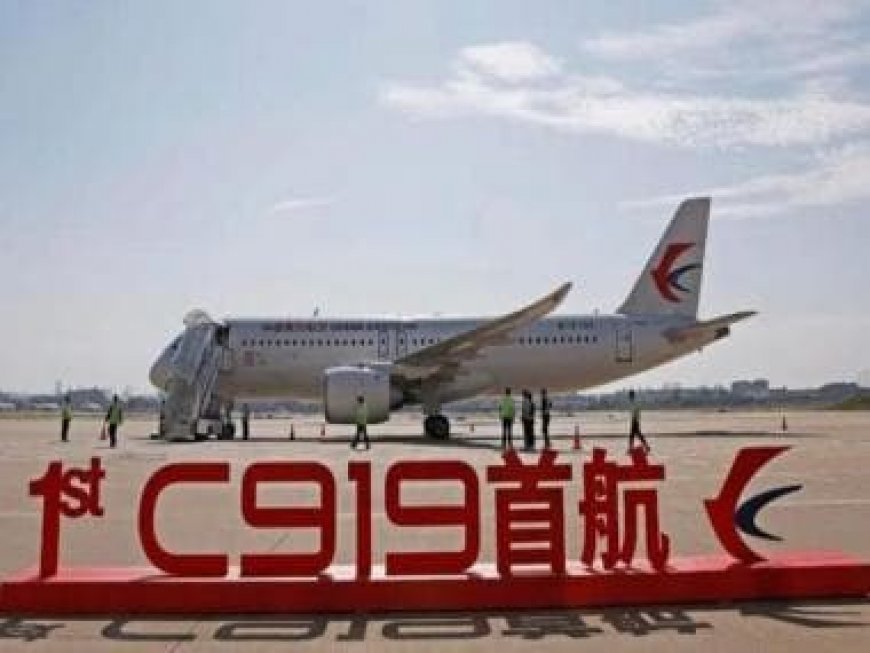Singapore Airshow: Made of US, European parts, can China tout ‘homegrown’ C919 jetliner as Airbus, Boeing alternative?
Singapore Airshow: Made of US, European parts, can China tout ‘homegrown’ C919 jetliner as Airbus, Boeing alternative?

China is looking to dent the near duopoly of Airbus and Boeing in the upcoming iteration of the Singapore Airshow, dubbed as Asia’s biggest, with its “homegrown”, but globally uncertified and relatively untested, COMAC C919 commercial jetliner that would be flying beyond Chinese territory for the first time for the event.
Several reports pointed to the Chinese pitch for C919 based on supply chain and production issues with its rivals to tip global interest in favour of the 160-pax capacity jetliner manufactured by State-supported Commercial Aircraft Corporation of China (COMAC). Case in point are the safety issues that have bugged Boeing’s 737 Max series (last month’s blowout of a door plug that exposed a gaping hole in the fuselage). Some analysts cite the company rushed to push up production when a whole lot of its experienced staff took flight.
The question, however, stands if C919 would be able to cut it in the face of global competition.
How ‘Chinese’ is China’s C919?
Experts and media reports cite that C919 is more of an assembly of foreign-made parts in China, than made-in-China. An analyst’s observation about C919 has become legendary: ‘Nothing that keeps C919 in air is made in China’.
To begin with, even the Chinese media says that some 40 per cent of the crucial components of the C919 have been imported. A study by Centre for Strategic and International Studies (CSIS) pegs foreign origins of C919 even higher: three-fifth of the commercial jetliner’s key components are made in the US (GE, Honeywell, Eaton etc); one-third in Europe.
Of the 14 suppliers in China, seven are JVs between Chinese firms and foreign counterparts.
Crucial components such as avionics, landing gear, nacelles, flight controls, and its jet engines (made by a CFM, a JV between US’ GE and France’s Safran SA) have foreign origins. China, reports say, accounts for just fuselage, wings, and the final assembly.
Uncertified
The C919 also at this point of time lacks the necessary global certifications to make it worthy for international role. It has been domestically certified by the Civil Aviation Administration of China, though not yet by FAA or the European EASA.
Chequered History
The C919 project—a narrowbody jet that can seat 160 passengers—ran into delays early on. It started in 2008. The model was designed to rival the two current workhorses, Boing 737 and Airbus A320. COMAC had promised that it would take to the skies in 2014, deliveries would begin in 2016. It did not fly up until 2017.
On a test flight just before commercial operation schedule, one of its engines malfunctioned.
Experts also point that the plane offers nothing new: no new tech and no better fuel efficiency.
Zero Global Sales
So far, COMAC has not been able to sell a single aircraft to any international customer. In fact, as reports suggest, the Chinese government has coerced its own corporations and financial institutions to place orders and keep the project afloat.
The state-owned carrier China Eastern Airline last year placed the single biggest order of 100 C919 planes for a whopping $10 billion.
What's Your Reaction?



























































